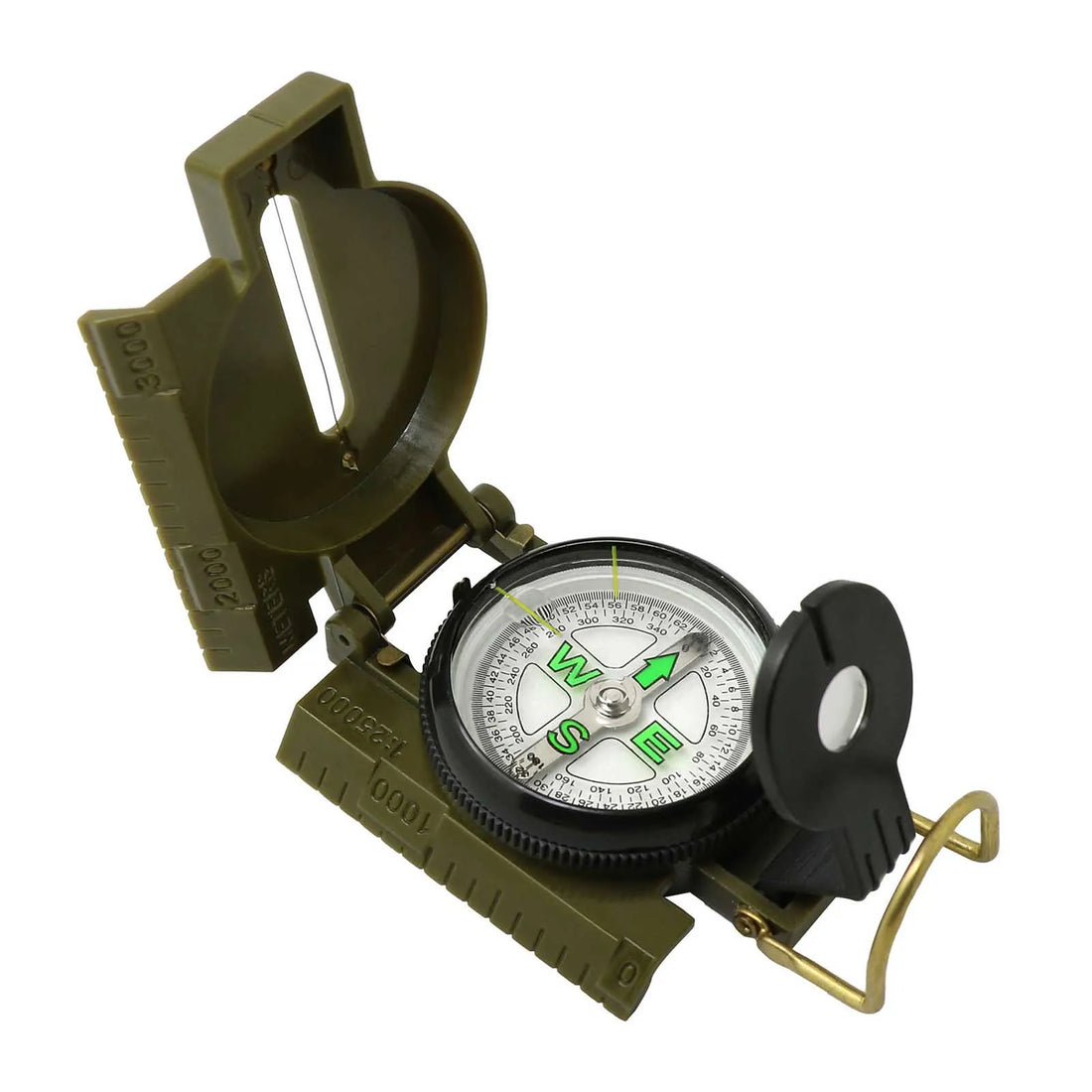
Complete guide on how to use a lensatic compass and map
Share
1. Understanding the Lensatic Compass
A lensatic compass is a compact and durable tool used for navigation. It’s especially useful for orienteering and land navigation. Here’s a breakdown of its parts:
- Sight Window (or Lens): A small window through which you sight an object or terrain feature.
- Base Plate: The bottom part that holds the compass, often marked with a ruler for measuring distances.
- Needle: A magnetic needle that always points north.
- Dial: The rotating dial around the compass that measures degrees in 360°.
- Liquid-filled Capsule: Helps the needle stay still and more accurate by reducing bouncing.
- Cover: Protects the compass when not in use and includes a sighting mirror for precise bearings.
2. Setting Up the Map
Before you can use a compass effectively, you need to orient the map:
- Place the map on a flat surface: Lay your map down and ensure it's aligned with your surroundings.
- Identify the North on the map: Most maps have a "north" indicator (a symbol, usually an arrow).
- Place the compass on the map: Position the compass on the map with the base plate lined up parallel to the map’s north-south lines.
3. Orienting the Compass to North
-
Set the compass dial to match the map’s north:
- Hold the compass flat in your hand.
- Turn the compass dial until the orienting arrow on the dial lines up with the magnetic needle. The needle should be pointing north.
-
Align the compass with the map: The compass is now aligned with the map’s north direction. Make sure the base plate stays parallel to the map's grid lines.
4. Taking a Bearing
To navigate from one point to another, follow these steps:
- Point the compass towards the target: Hold the compass and point the sighting lens toward a distant object, landmark, or terrain feature you want to reach.
- Align the sight window: Look through the sight window and ensure the object you are targeting is in line with the crosshairs or needle.
- Read the bearing: Rotate the dial until the magnetic needle is aligned with the orienting arrow on the compass. The degree reading on the dial is the bearing you need to follow.
5. Following the Bearing
- Keep the compass flat: While walking, hold the compass in front of you, flat, and keep the needle aligned with the orienting arrow.
- Track your movement: As you walk, constantly adjust the compass so the needle stays aligned with the arrow, ensuring you’re traveling along the correct bearing.
6. Adjusting for Declination
- Understanding Declination: Magnetic declination is the angle difference between true north (geographic north) and magnetic north (which the compass points to). The amount of declination depends on your location on the Earth.
- Adjust for declination: Many compasses, including lensatic compasses, allow you to manually adjust for declination. You do this by rotating the bezel dial or adjusting the declination scale. Check the declination value for your region (often found in the legend of your map).
7. Using the Compass for Terrain Navigation
- Taking multiple bearings: If you’re navigating through a forest or along a trail, you can take multiple bearings by identifying landmarks along the way, ensuring you're on course.
- Re-orienting the map: After traveling for a while, stop, re-check your bearing, and compare it with your map to ensure you're still on track.
